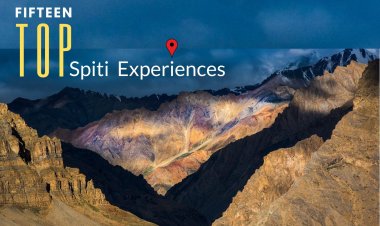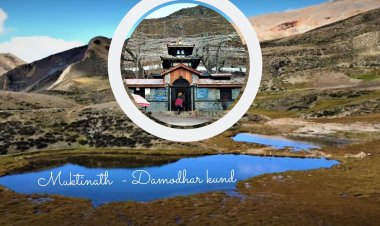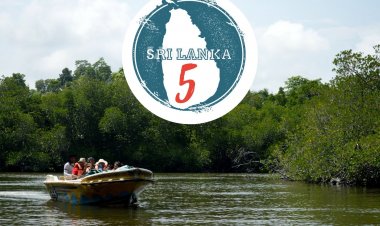The Sweet and Salt Side of Pulicat Lake
A stunning brackish lake sandwitched between Tamilandu and Andrapradesh transforms into a virtual paradise teeming with birds such as flamingos, Gulls,Cormorants,Pelicans , Storks Geese and many more. Besides spotting rare wildlife, there are plenty of inlets and lagoons around this lake that make boating around it a popular activity. It is also an excellent spot for fishing, Photographers, whether you’re an experienced angler or a beginner looking to try your hand at something new. Thats pulicat !
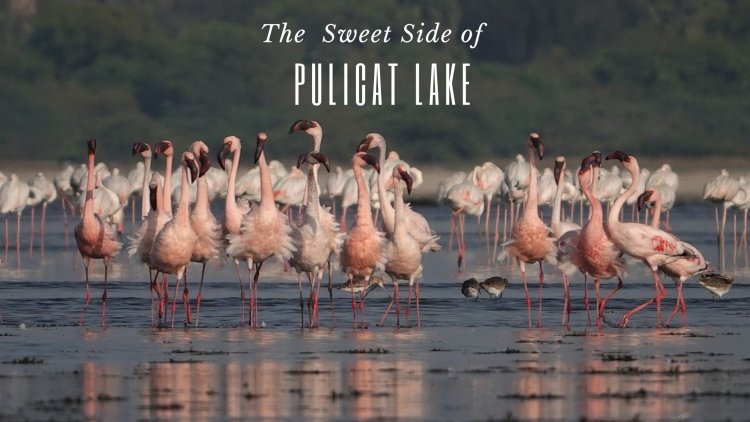
Ever since my visit to brackish Chilka Lake, I always longed to visit the fishing village Pazhaverkadu or Pallaicatta down south on the Cholamandalam coast – popularly Known as Coromandel Coast. Being an avid traveler, though I was curious to know the history. I was not much interested to know the contributions made by the Dutch, British, Portuguese, and Europeans who visited the coast as nothing ever seemed significant nor noteworthy to me.
It purely seemed to rule our rich land, in the name of trade and spread the religion of Christianity!
You might be pondering, As I was ?. Until I mention that it is the same Pulicat - renamed by Dutch who ruled us for 214 years ) that I am referring to.
Today, though everything is history. Pazhaverkadu is a bustling fishing town, with a brackish saltwater lagoon on the Coromandel Coast
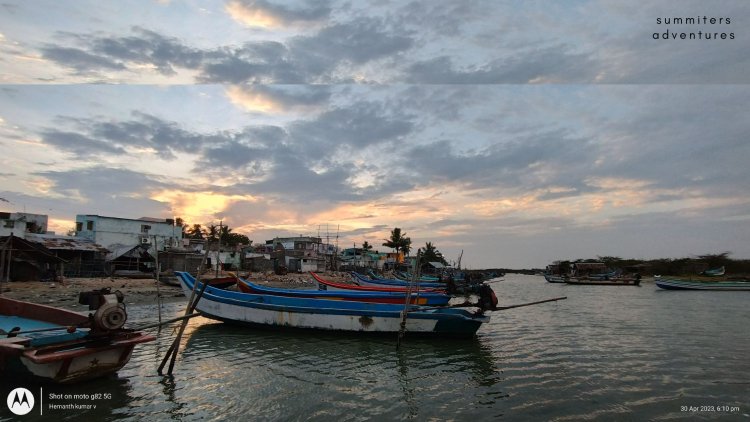
However, you may be wondering, what was the strong reason that persuaded me to step foot on one fine morning at this historical seaport
As I walked along the bustling Kottai market street, I could see fishermen carrying fishing nets, and boats aligned along the lake. Men Manouvering the motor boats for routine work and women were busy segregating the fish.
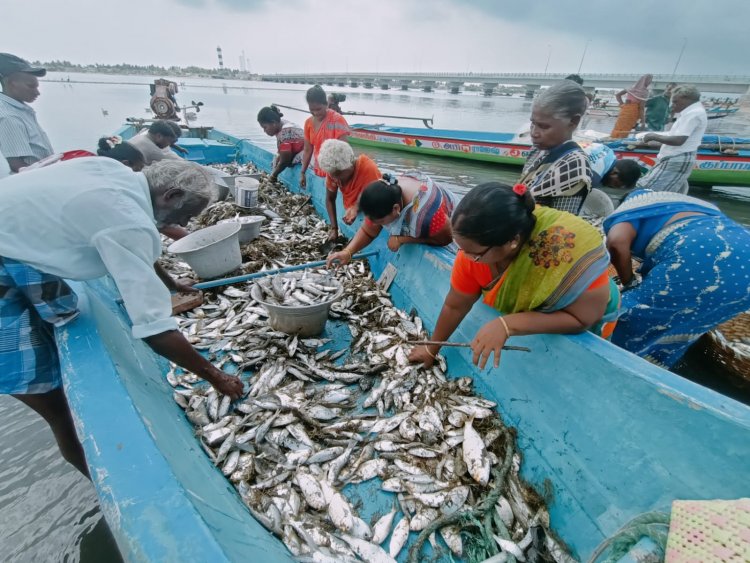
A major part of the lake lies on the southeastern portion of Andhra Pradesh and the rest covers a portion of Tamil Nadu in an adjacent manner. The Sriharikota island separates the lake from the Bay of Bengal; which has made the southern end of the island and the northern part of Pulicat the only entrance of the lake into the sea.
The lake is today declared a Bird Sanctuary and is encompassed by this waterbody. As described previously, a major part of Pulicat Lake comes under the Nellore District of Andhra Pradesh.
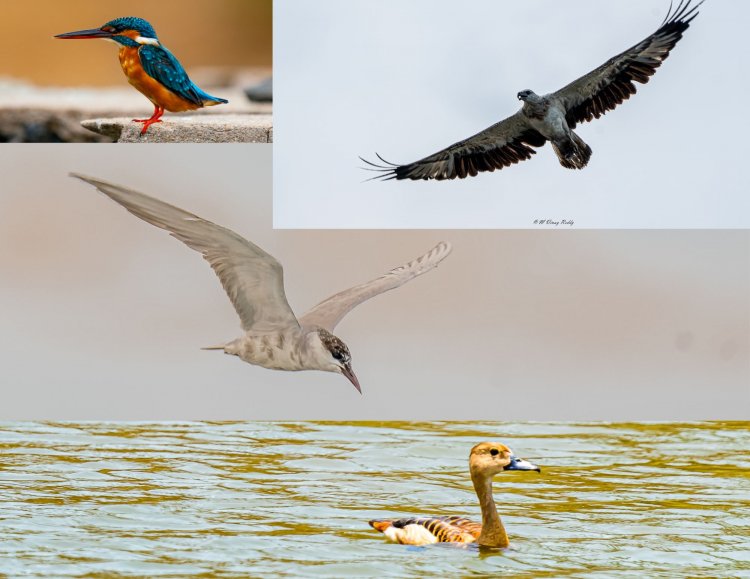
As we approached the water body, armed with long telephoto lenses. We could hear boatmen making gestures at us and shouting Vango Vango in the local dialect Tamil. A boat named Jenes appeared from nowhere and began to speak incessantly about the winged visitors Flamingos, made way with a long pole to step into the long boat.
We could see a pink patch in sudden action, our boatman cum guide Jenes gestured and pointed at the greater flamingos in flight. The morning horizon shimmers pink with long lines of Painted Storks and Greater Flamingos.
His ability to identify waterbirds and waders from afar, just by their flight or stance, continues to amaze me. Soon our boat came to a halt and stand still, we could see lesser flamingos feeding in the shallow water. We could hear to the calls and water sounds too. The colorful plumage and the long beak is something unique. We could even see Fulvous whistling ducks approaching us, Fishing eagles, Pied Kingfishers, Caspian Tern, and Whiskered tern looking for fish.
A total of 90 numbers of finfish species and 13 numbers of shellfish species have been identified. Lake Pulicat has also a rich and diverse fauna, 49 species of Phytoplankton, 88 species of Zooplankton as well as 12 different Macro algae, and seagrass are found
As the sun rose over the eastern horizon of the pulicat lake, the golden light of dawn cast a warm glow on the surrounding wetlands, where a chorus of birds sang out in celebration of the new day. The early morning was ablaze in vermilion color as a flock of lesser flamingos glided with grace. Their long necks and colorful wings were a sight to behold !.
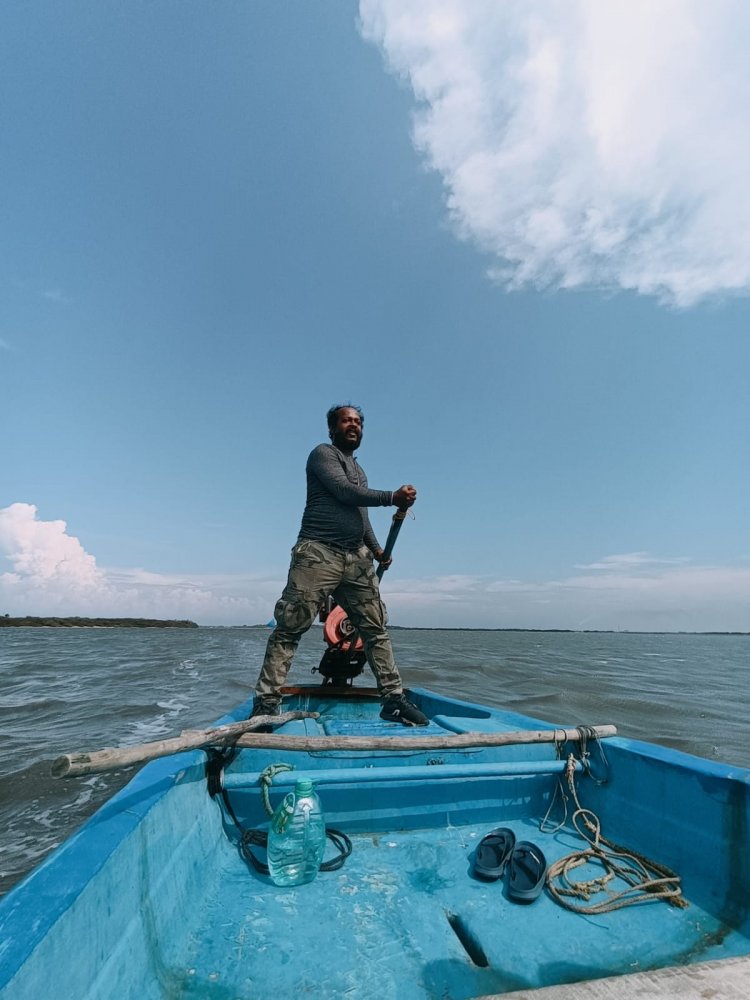
As the morning veil of mist lifted. We could a lonely fishing eagle waiting for its turn to delve into the lake. In the meanwhile, our guide gestured us to the group of greater flamingos wading through the shallow water of the lake. The lake is rich with prawns and algae which attract flamingos...
We could hear a unique sound from their beaks darting front and back as they search for food together.
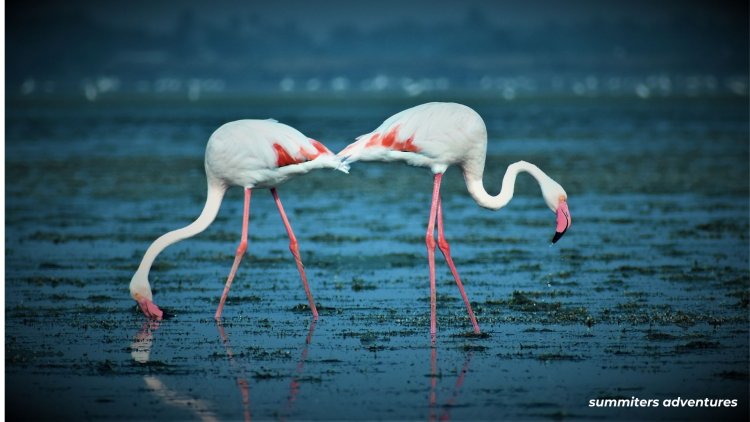
The sun rises higher in the sky, and the morning calmness is broken by the sound of chirping birds. The Pulicat Lake comes alive with activity. The fishermen slowly row their boats and move forward deep in the lake for laying nets. The water is teeming with fish, a large flock of terns, gulls, and pelicans can be seen flying overhead.
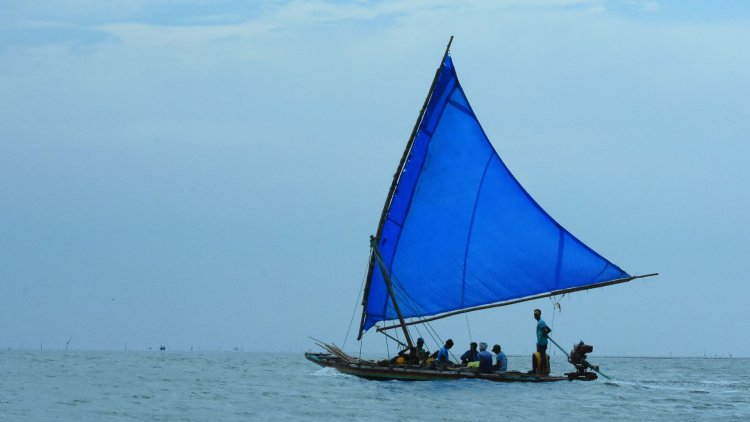
Winged Visitors
Every year during the winter months of February to May. Flamingos in huge numbers visit the lake in search of food and breeding. This includes both greater flamingos and lesser flamingos. The brackish vast lake teeming with marine life is an ideal location for them for a stopover.
The birds do not hatch their eggs in the region but fly back to either Siberia or Sahara once summer is over.
Their pink feathers are a vibrant contrast against the blue sky. Flamingos are social animals and often gather in large groups like one we see here to feed and mate. It is truly a special and rare experience to witness these creatures in their natural habitat, so close to floating on a boat unmindful of time.
Although there is a great communal harmony between them and other species of birds seen at Pulicat Lake. What I noticed that, they are shy and away from the mainland with no disturbance. Though large gatherings of gulls and painted storks can be seen, they maintain their territory.
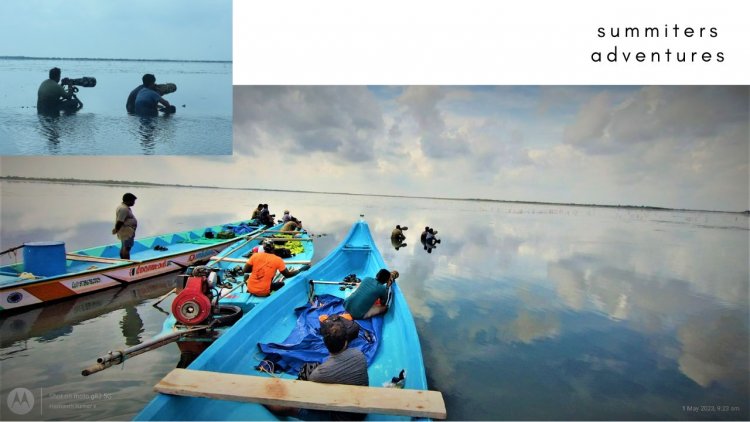
It was truly a memorable experience to watch out for so many species in one place each with its own color and characteristics
Some men wade neck deep, setting up nets, and a few women dangling a small pouch looking for Shrimps.
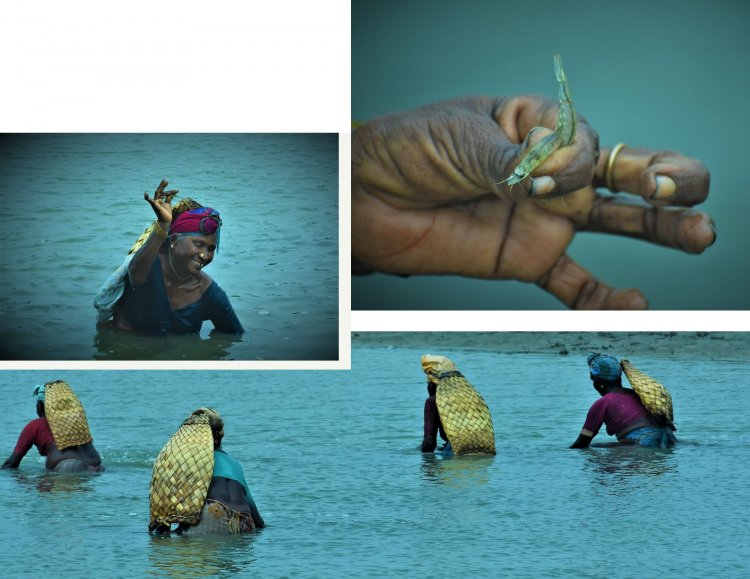
Predictably, Pulicat is also a crucial breeding ground for plenteous fish species like Milk Fish, Sardinella, Lond snouted barbs, Flathead grey mullet, Indian Catfish, crabs, Shrimps and Sting rays, and other marine life.
It was a peaceful evening, with the sun setting behind clouds and sun rays scattered in the veil of mist. The birds in silhouette return to their nests on the island and the silhouettes of fishermen cast their nets into the water. The Vibrant colors looked soothing and pleasant to the eyes!
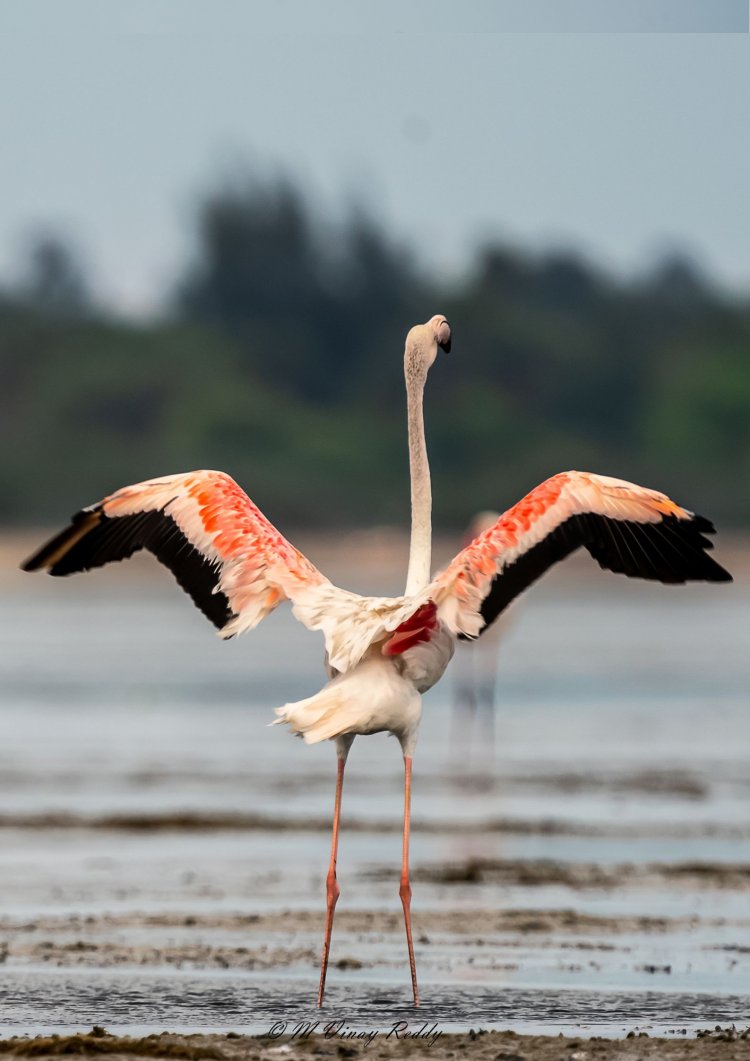
And eyes gleamed in the setting sun, the shape on my necks looked out worldly and was a sight to behold.No words to describe just experience the calmness just sitting and gazing at the western sky, The magic that surrounds us. We promise to ourselves to visit again and spend more time. As the boat reached the dock, we can see boats buzzing with fishermen
Importance of Water body - Sweet & Salt Side
Beyond this staggering biodiversity, this bio-region is also a lifeline for Chennai city, which draws millions of liters of fresh water every single day from the ‘well-fields’ of its river basins. Pulicat saves lives too. When cyclones hit the coast, the lagoon wetland complex plays its role as a massive floodwater catchment and acts as a critical cyclonic buffer and barricade against tidal and storm surges.
On a map, this waterbody is a garland of fishing villages such as Annamalai Cheri, Aurivakamand Palaverkadu Over a hundred thousand fisherfolk draw their livelihoods from these waters, which support over 200 species of birds protected by the Pulicat Bird Sanctuary and its surroundings.
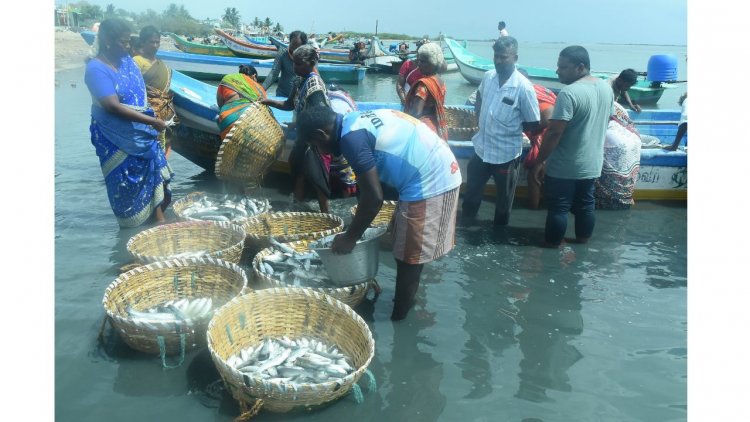
Migratory studies conducted over decades confirm that it is a vital stop-over location on the Central Asian flyway. Perhaps its most admired attractions are its Greater Flamingos, over 15,000 of which are to be seen here. Predictably,
Pulicat is also a crucial breeding ground for plenteous fish species and other marine life.
Beyond this staggering biodiversity, this bio-region is also a lifeline for Metropolitan Chennai city, which draws huge volumes of fresh water every single day from the ‘well-fields’ of its river basins. Pulicat saves lives too. When cyclones hit the coast, the lagoon wetland complex plays its role as a massive floodwater catchment. The Pulicat barrier island and associated sand systems also act as critical cyclonic buffers and barricades against tidal and storm surges.
Paradise in Peril
The upcoming proposed projects around Pulicat will have a massive impact on the environment. But possibly the greatest danger may come from the choice of location. Planned to be India’s largest port project, it could obliterate much of Pulicat,
Pollution from pesticides, sewage, agricultural chemicals, and industrial effluents is gradually becoming a major threat A paucity of rain does not allow prawn hatchlings to grow.
Many agricultural families have also taken to fishing – leading to the over-exploitation of the natural habitat. Finally losing sense of peace and tranquility that it offers
&
Erase it from our maps forever
Travel Facts - Pulicat
1. When to visit Pulicat Lake
The best time to visit the lake is from March to May.
Greater Flamingos and Lesser Flamingos visit this place. from the sub-Saharan region in Africa. Bar-headed geese Black-headed Ibis (Threskiornis melanocephalu) and Whistling Teal (Dendrocygna javonica) live there as well.
The western side is billeted by Pulicat’s summertime passengers in pink who remain in the region from March to July.
They migrate from faraway places including Tibet, Ladakh, Siberia, China, Australia, and Nigeria
2. Where to Stay
You can stay at a budget lodge for Rs 1500/- A/c room. After crossing the Pulicat Lake next to the Light tower.
3. Places to Eat
Kottai Street has only a few hotels, where you can have typical local food.
1. Rani Hotel is one you should not miss. It is a 40-year-old Food Joint.
2. G Hotel is one which is alternative. You can try Kotthu Paratha and local dishes
4. Whom to contact for the boat ride and cost
Boats are available at the lake. However, you can contact Mr Yuvraj and his son-in-law Mr. Jenes, who are fishermen from the region and have been providing boat rides to wildlife photographers and tourists who are keen to observe birds here, for decades now. They charge Rs 3000/- for a boat that can accommodate 6 members. Time is subject to your interest.They don't compel you to move back.
Few dos and donts
- Don't forget to wear a life jacket and buckle it during the boat ride
- Dont litter, carry back plastic after your boat ride
- Don't feed fish or any birds food that you carry.
- Don't shout, communicate only by gestures. Birds are very sensitive to sound.
- Carry appropriate lenses and maintain distance during photo sessions









